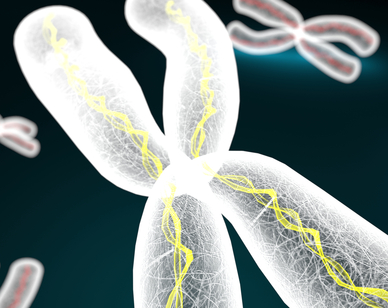My mother’s father died of cancer before I was born. My mother was pregnant with me, but had not told her father that she was to have a second child. The story I’ve been told is that they opened him up to remove the cancer — and found it everywhere. They closed him back up and sent him home to die.
Videos by Rare
Both of my mother’s brothers died of cancer. All three of these men were heavy smokers, one ignored the signs of potential trouble for years, and all three died from cancer.
My mother was diagnosed with cancer in 1978 and beat it. She was diagnosed a second time in 2005, but again beat cancer. She went to heaven last fall, but not because of cancer. She was not a smoker — so what was the cause?
Her sister, my aunt, has never had cancer. I’ve often wondered, what genetics, lifestyles and triggers can make a difference in the cause of cancer?
There are some scientific discoveries so mind blowing that when you first hear about them you know that they are really, really big. That there will be ramifications for decades, even though you don’t know what the ramifications will be.
The grandness of the discovery captures your imagination and changes your thoughts about relationships and life, even thought you don’t quite understand the details, the underpinnings of the discovery.
Such is the discovery noted in the New York Times article this week “Seeing X Chromosomes in a New Light” by Carl Zimmer. The article captured my imagination and broadened my mind.
The last time that I dealt with chromosomes was in college biology, when I had the mistaken belief that biology was my future and my major. A few chemistry labs later and one histology class, and I knew that my future was not in biology, but in business, where getting an A did not involve donning goggles and aprons for hours at a time.
As a quick review, the female chromosomes are XX and males are XY. Children receive one of their mother’s X-chromosomes and either the X, or Y-chromosome from their father. The transmission of the father’s chromosome determines whether the child is a male or female. This is not new news, but old.
Females, having two X-chromosomes, shut down one of the chromosomes at a cellular level. Which X-chromosome is shut down varies by cell — in some it’s the one passed down by the father, in others it’s the chromosome that is passed down by the mother.
OK — so scientists have known about this for over five decades, and it’s just now coming to my attention — but why the press now?
A recent study was published in “Neuron,” that included maps of the X-chromosome inactivation. “They found a remarkable complexity to the pattern in which the chromosomes were switched on and off,” according to Zimmer.
Females have two copies of the X-chromosome, each of which has different versions of the genes not found on the other. This allows for one or the other to be used in the cell, leading to more genetic diversity than males. If one of the genes has a weakness — the other can be used.
“Females simply have access to realms of biology that males do not have,” Huntington Willard, the director of Duke University’s institute of Genome Sciences & Policy noted.
The recent published research led by Dr. Nathans showed illuminated maps of where different X-chromosomes were activated in various cells within the bodies of mice. Nathans “speculates that using chromosomes from both parents is especially useful in the nervous system. It could create more ways to process information. ‘Diversity in the brain is the name of the game.'”
What shuts down the second X-chromosome? It’s a number of molecules, led by what has been named the Xist.
Dr. Lee, a Howard Hughes Medical Institute investigator at Harvard Medical School, has found that when the Xist is inactivated and the second X-chromosome is allowed to be active, it creates extra proteins. These extra proteins can drive a cell to grow uncontrollably. This additional uncontrollable growth makes cancer is more likely.
Women’s brains are created differently, on the molecular, cellular level. What does this mean? I’m not sure, but I’m fascinated. Now that we know Xist exists, maybe we can determine how it becomes inactive — and ensure it remains inactive.
To me, this new research is both mind-blowing and potentially life-saving.
© JACKIE CUSHMAN
DISTRIBUTED BY CREATORS.COM



